I’ve been detailing cars with this Ridgid vacuum both professionally and as a hobbyist for over 6 years now. Needless to say, I’ve put it through its paces. In this article, I’ll be sharing my thoughts on its performance as well as how it’s holding up.
Any popular wet/dry vacuum can technically get the job done. There are a few factors that will decide whether a vacuum is really great for auto detailing though:
Why do I think this Ridgid 5hp vacuum is the best? Well, I spent many hours researching online, comparing specs with other models, and watching tons of YouTube detailing videos to see what vacuum other detailers were using.
There was a very clear stand-out among the pack – everyone was using this Ridgid model and both the price and specs seemed to justify it. So I went out and bought one with my own hard-earned money.
Ridgid WD4070 5 HP Vacuum
This vacuum has been a favorite by professional auto detailers for many years (especially mobile ones). It takes up very little space and is easy to carry to the job site.
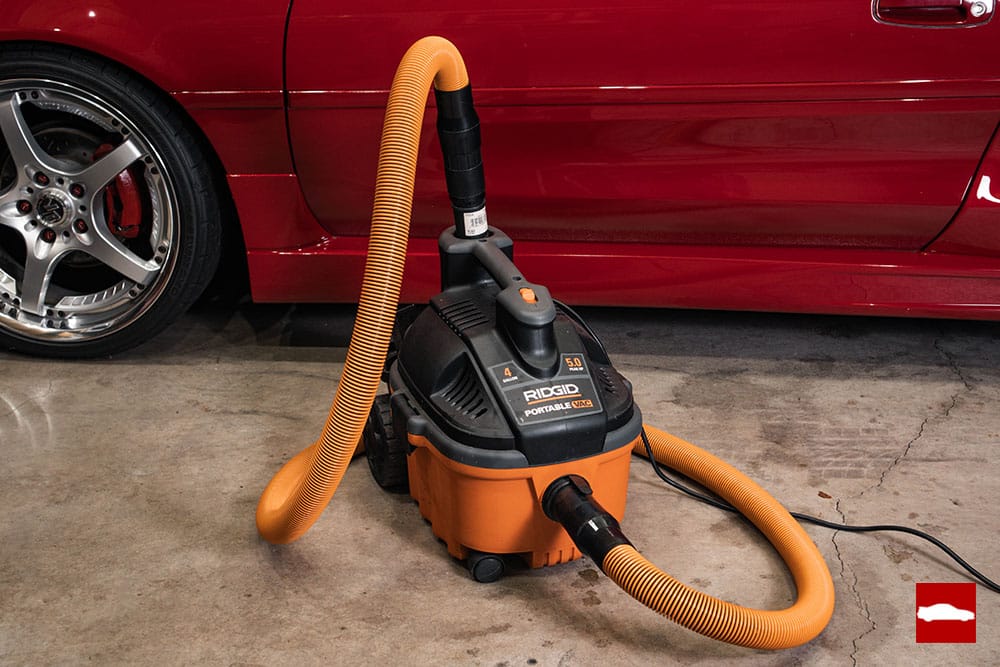
Pros
Cons
Why is the Ridgid WD4070 so popular for auto detailing?
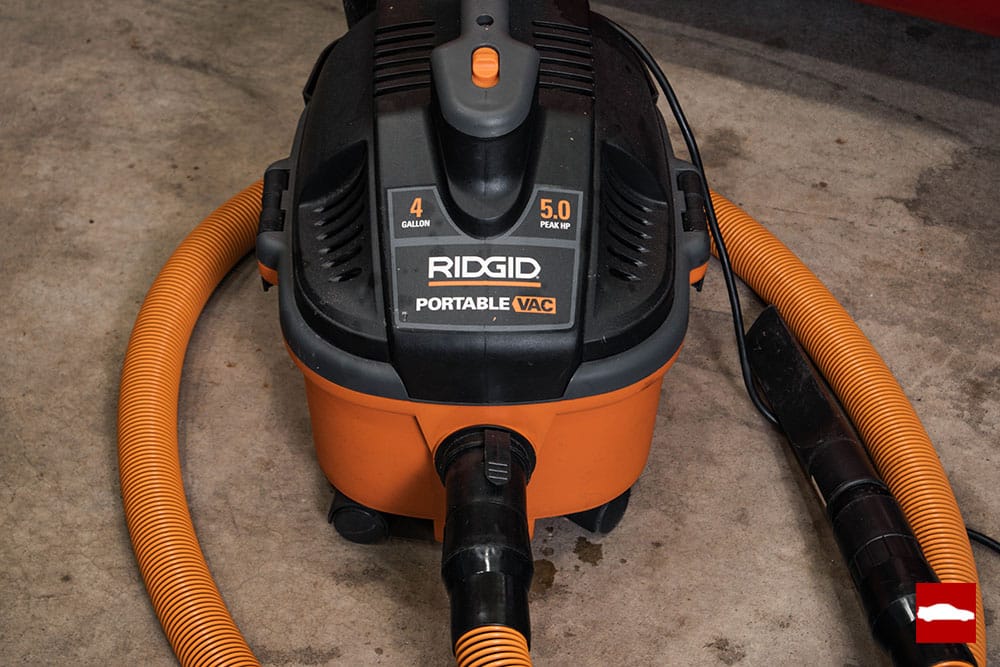
It’s quite possible that you’ll see a mobile detailer pull this vacuum out of their rig when they arrive on site. There’s a good reason for that – it simply works well. This vacuum is priced at an enthusiast level, but can absolutely handle professional use.
The WD4070 has plenty of suction for cleaning vehicles. It’s important to know that no vacuum can handle every aspect of interior cleaning by itself with no technique involved.
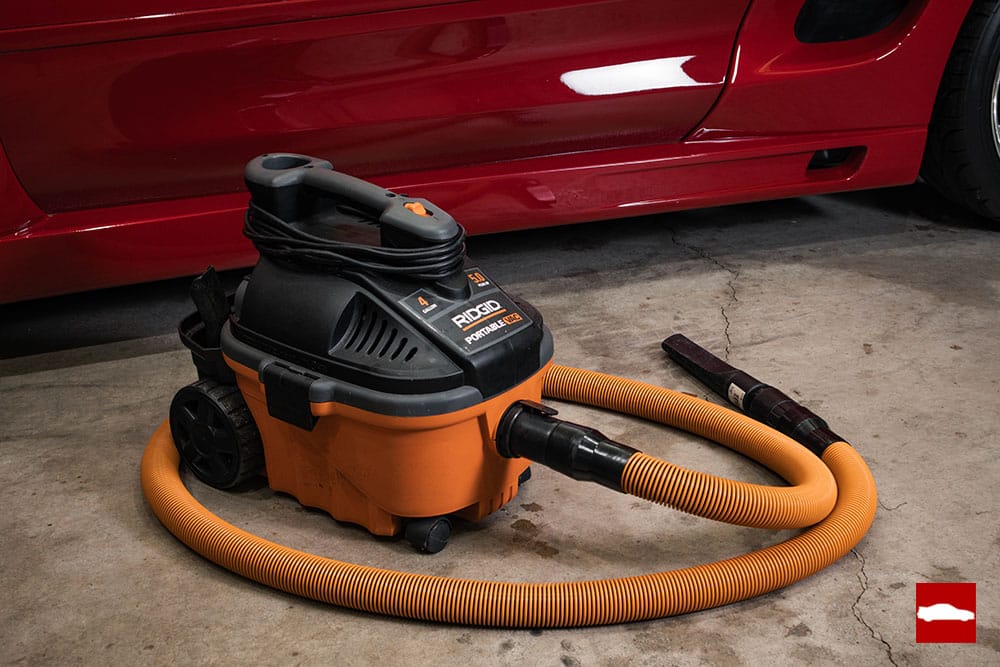
This isn’t a carpet extractor or a steam cleaner. But with the right technique, I believe you can avoid needing either of those machines for 90% of interior detailing tasks.
As long as you take care of your vehicle, you shouldn’t need more than a vacuum, some brushes, and an all-purpose cleaner. Perhaps I’ll explain those strategies further in a future post. For now, let’s stick to the vacuum itself.
You can see me using this vacuum in the video below:
Perfect balance of capacity and maneuverability
The 4 gallon capacity is more than enough for detailing cars. This isn’t something you need to worry about. As long as you empty it out and clean the filter periodically, you’ll never have an issue.
Going overkill on the capacity of your vacuum translates to a bulky unit that takes up too much floor space or is very difficult to travel with.
This Ridgid takes up very little space whether you’re traveling with it in your vehicle or keeping it in your garage at home. Its small size combined with its large handle and light weight makes it very easy to grab and go.
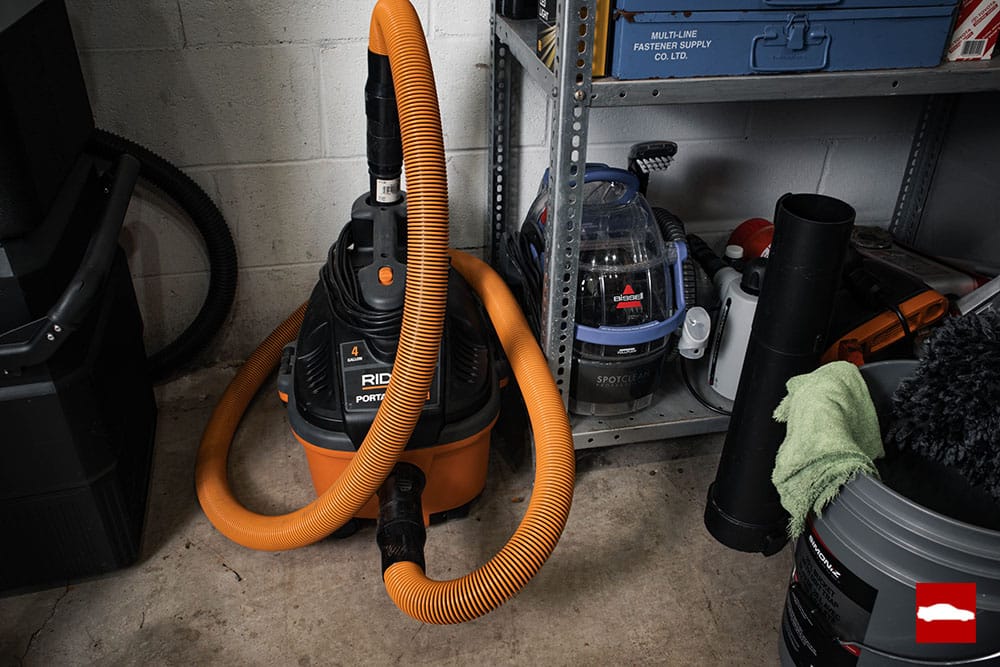
Plenty of power
This vacuum has a 5 peak hp rating. Apparently, there’s a certain level of conspiracy over horsepower ratings on vacuums but that’s a story for another day.
All I can tell you is that this thing sucks. (see what I did there?)
It’s important that you choose a vacuum that has plenty of horsepower so you can work as efficiently as possible. I’ve used lower-powered vacuums before and it can be very frustrating to have to go over the same spot repeatedly just to pick up the dirt.
Reliability
I’ve been using this vacuum exclusively on both mine and customers’ vehicles for over 6 years now and I haven’t had a single issue with it. Nothing has broken and nothing is worn out. It performs exactly how it did when it was brand new!
Ease of use
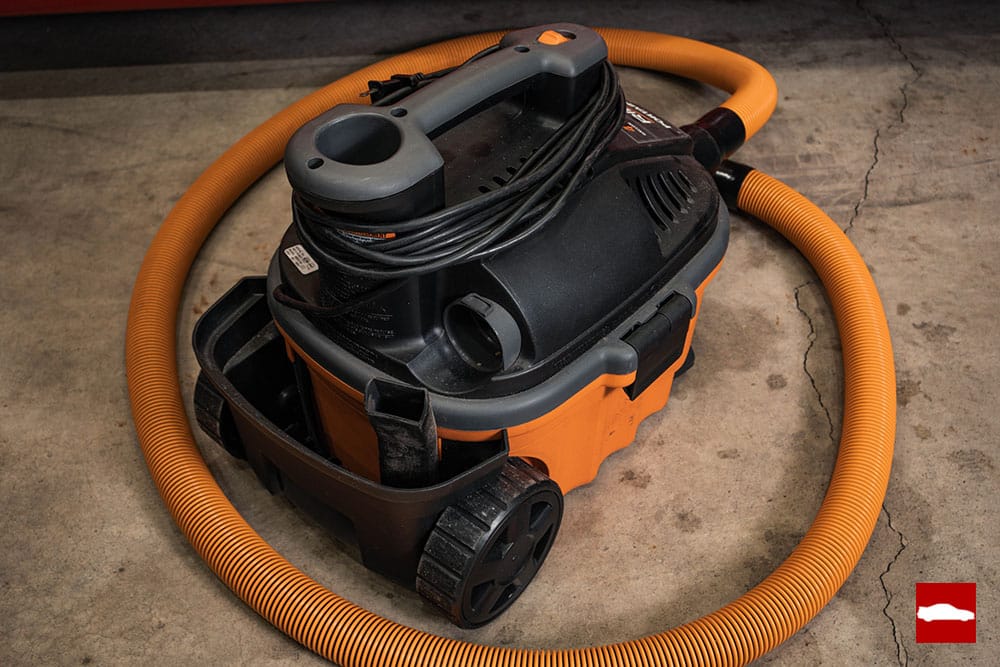
The design of the Ridgid vacuum makes it really easy and intuitive to use. I find myself flipping the on/off switch with ease, often without even looking. The roller wheels are high quality so the whole unit can be maneuvered with a light tug on the hose.
It even has grooves built into the body that make it easier to wrap its generous 20 foot long power cord around it when not in use. (I rarely need an extension cord thanks to this). It also has a small storage bin on the end that you can use to hold accessories.
Warranty for Ridgid vacuums
The final selling point of this vacuum is Ridgid’s lifetime warranty. I love any company that stands confidently behind its product. I don’t have any concerns about the reliability of the WD4070, but it’s nice to know that I’m covered in the event that something goes wrong.
I’ve used this vacuum on some pretty gnarly interiors (or as some customers in the detailing world put it: “not too bad!“) and I’ve never felt like I needed more power.
It’s hard to go wrong with this one thanks to its relatively low price and excellent performance. The addition of the accessories I mentioned makes this a great choice for auto detailing.
Vacuum accessories for auto detailing
Out of the box, the WD4070 is set up for general use as opposed to car detailing. There are a few accessories that I highly recommend if you’ll be using it for auto detailing. These aren’t absolutely required, but they’ll make your life a lot easier.
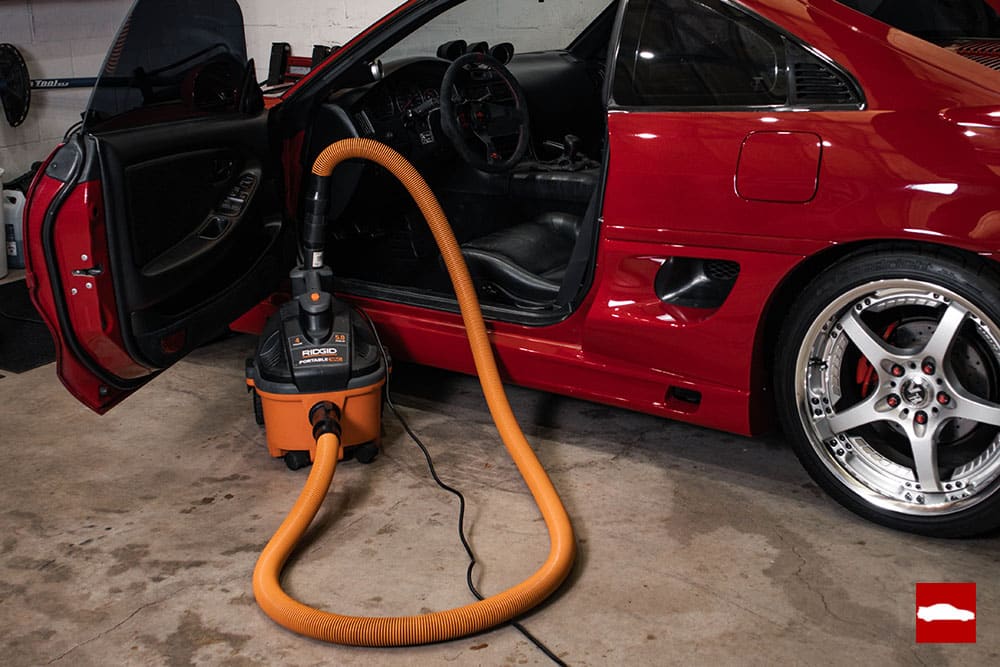
Crevice tool
First and foremost is a crevice tool like this one. This isn’t included with the vacuum itself and is needed to fit down between car seats and other tight areas. This is cheap to buy and will make all the difference in being able to reach every corner of your interior.
Higher quality hose
Another important accessory is a professional grade hose. My only real complaint about this vacuum is the plastic hose that it comes with. I’d heard other people talk about the downsides of the stock hose, but didn’t think it was that big of a deal.
I was wrong.
After fighting with the original hose like the Crocodile Hunter for a few months, I finally caved and bought the Ridgid VT2570 pro-grade hose. The difference was night and day.
I no longer have to worry about pulling the hose too hard and dragging the vacuum into the side of a vehicle. It flexes and moves much more naturally and completely changes the user experience.
Knowing what I know now, I’d recommend skipping the stress and upgrading to this hose right away.
Rubber pet hair brush
If you don’t have any animals, this might not be very important to you. If you do, it will really help to pick up that hair. You can use a pet hair brush like this one to gather the hair into bigger clumps that the vacuum can suck up easier later on.
A squeegee or even a rubber glove will also work well depending on the size of the area you’re working on.
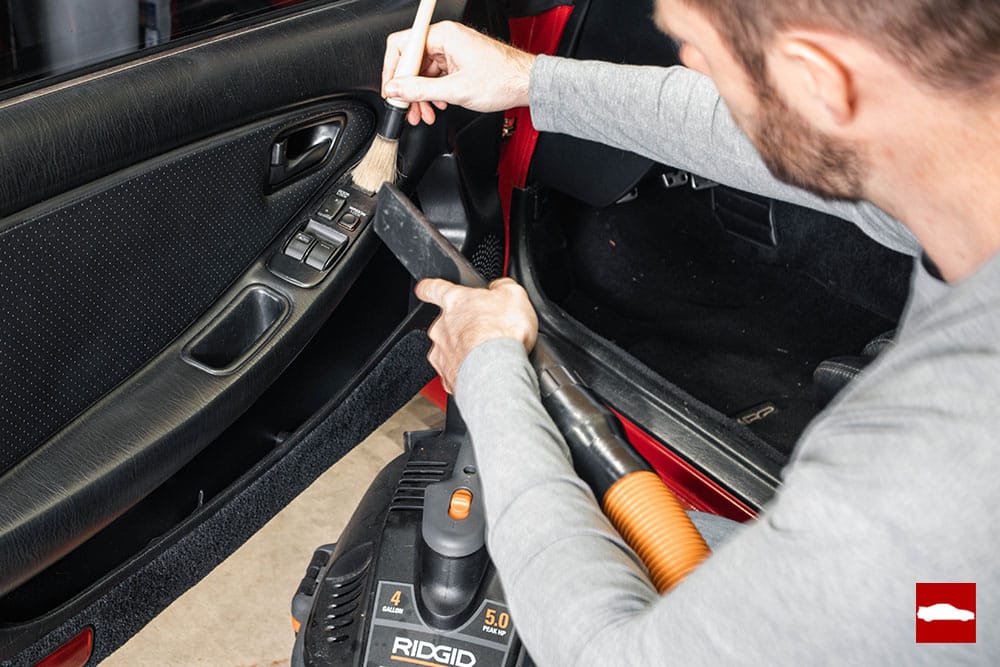
Small, soft-bristled detailing brush
I find a small detailing brush like this one comes in really handy for reaching dirt in the cracks of dashboards, center consoles, and gear shifts.
These areas are hard to reach with just a towel, so using a brush in one hand and the vacuum nozzle in the other is a great way to break the dirt loose and suck it up simultaneously.
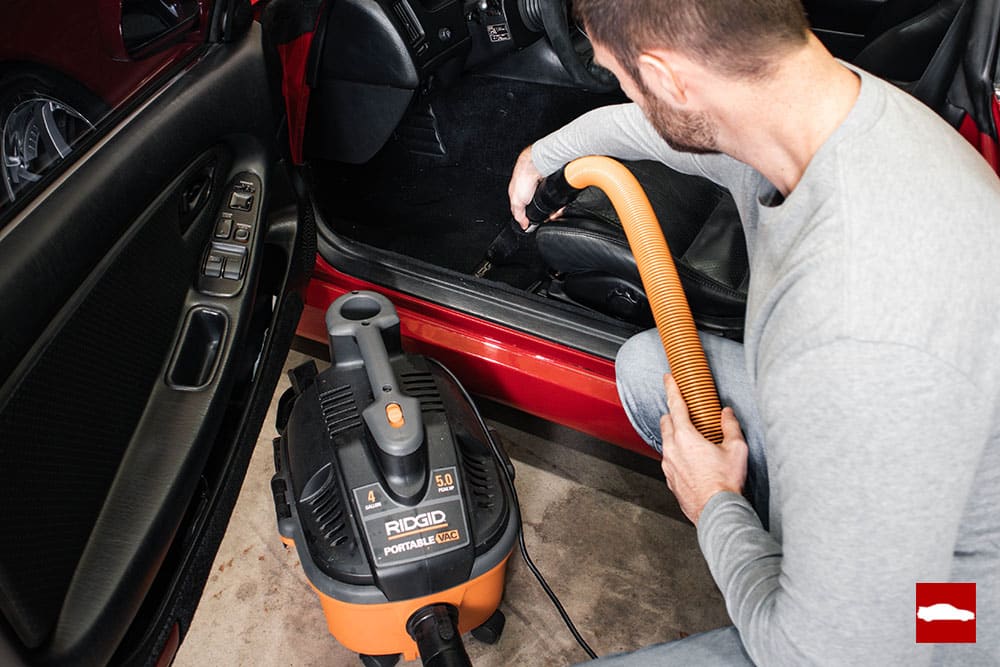
Tips for vacuuming your car interior:
Why you can trust me:
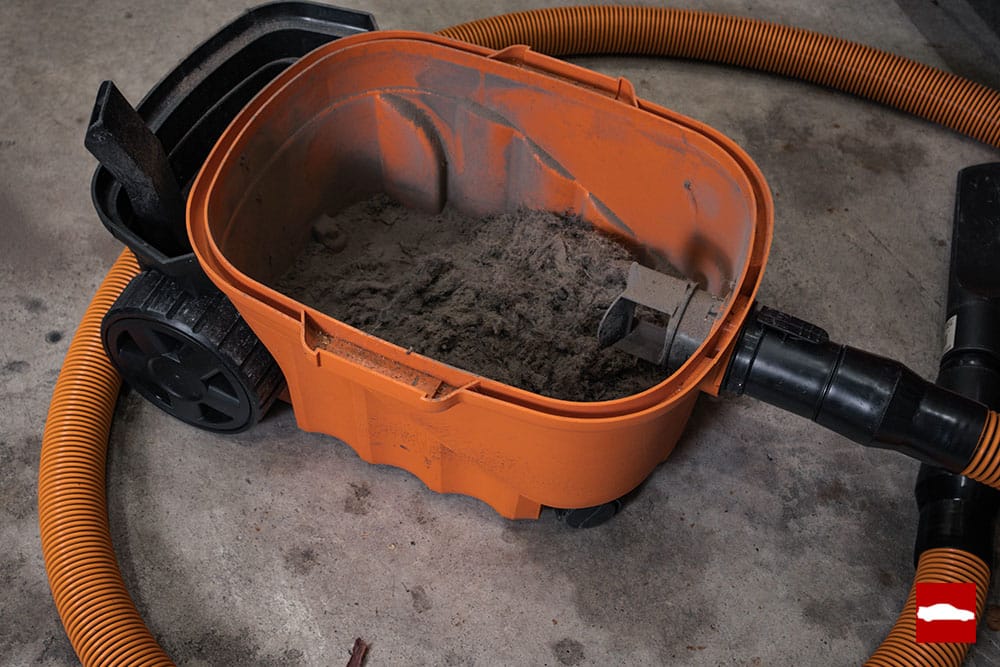
Not only do I actually use the products I review, I use them long-term in the real world. While other large websites might go as far as actually buying vacuums to test out, they use them for a day, maybe a week at best.
Can you guess how long it took me to collect this much dirt in my vacuum? That’s the level of experience I’m sharing with you!

Tim is the creator of Canadian Gearhead. His experience with auto detailing and working for Toyota shows through all of the articles posted here. He runs the Canadian Gearhead site and YouTube channel full-time now and currently owns a 2007 4runner, 2006 Tacoma, and 1991 MR2. Read more about Tim:

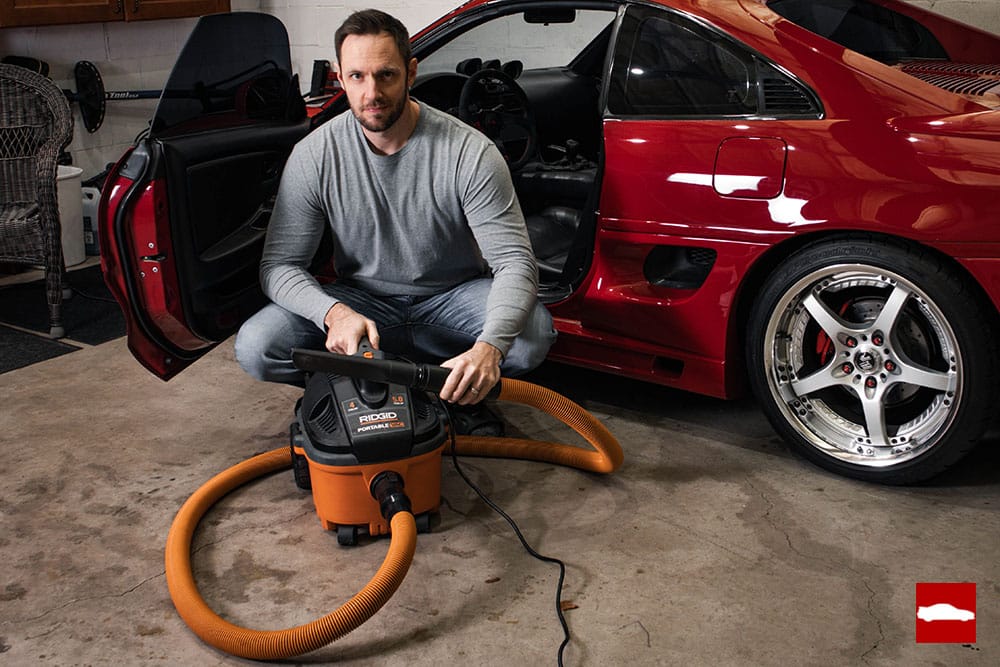

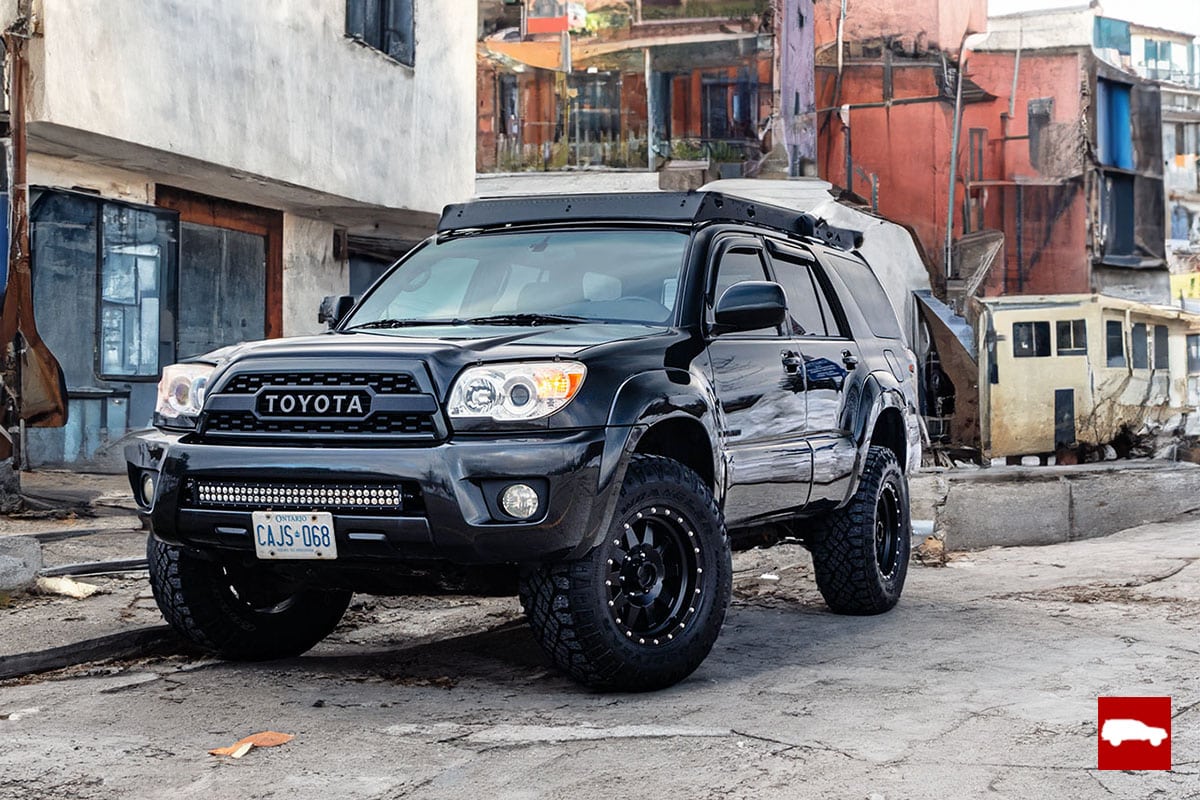
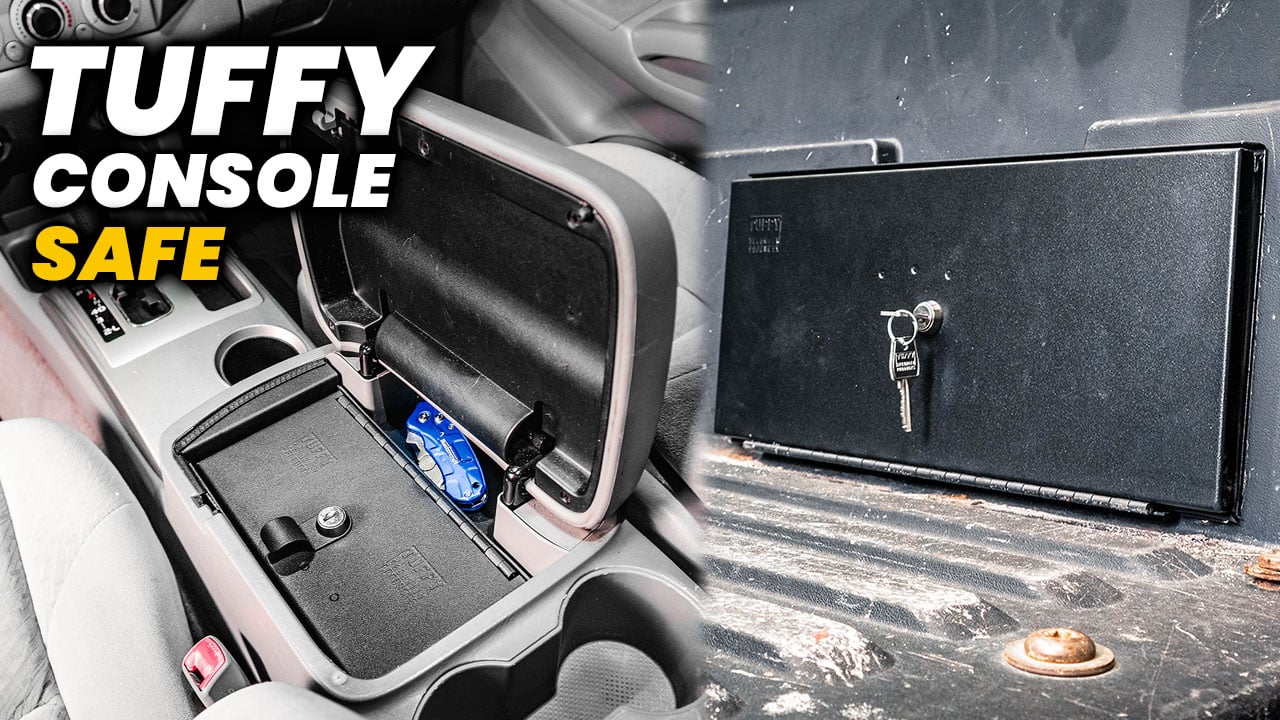
Leave a Reply